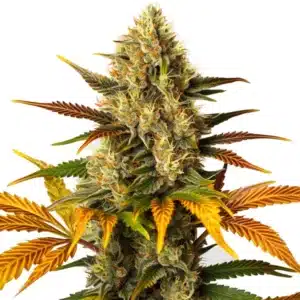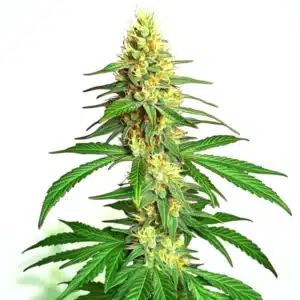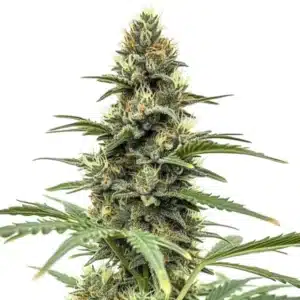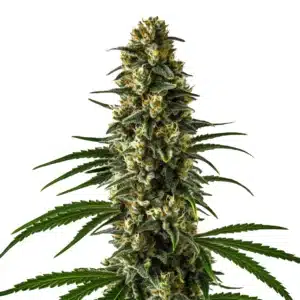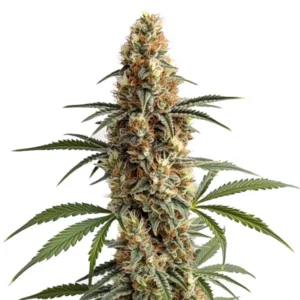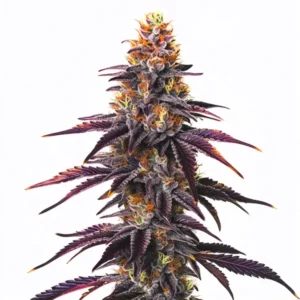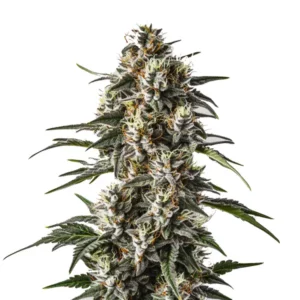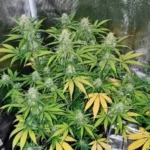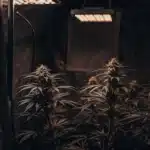
How Do Plants Sense Light?
Plants have an incredible ability to sense light. They use this skill to grow, reproduce, and perform photosynthesis. But how do plants sense light? It all comes down to special cells and proteins in their leaves and stems.
When light hits a plant, certain proteins called photoreceptors pick up on it. These proteins are sensitive to different kinds of light, such as blue, red, and far-red light. Once they detect light, they trigger a series of changes inside the plant. This process helps the plant decide which way to grow or when to flower.
Recommended Strains
Blue Dream
|
|
THC | 17% - 24% (Medium) |
|
|
Type | Feminized |
|
|
Yield | High |
|
|
Phenotype | 50% Indica / 50% Sativa |
Gelato
|
|
THC | 27% (High) |
|
|
Type | Feminized |
|
|
Yield | High |
|
|
Phenotype | 50% Indica / 50% Sativa |
For cannabis growers, knowing how plants sense light can be the key to improving yield. For example, the popular strain Blue Dream responds well to blue light, enhancing its growth during the vegetative stage. So, by understanding these mechanisms, you can optimize your grow room setup for the best results.
How Plants Detect Light Changes
Plants don’t just see light; they also notice changes in it. This includes the time of day, the season, and even sudden shifts in the environment. The ability to detect light changes helps plants adapt to their surroundings.
One way plants achieve this is through photoreception. Photoreception in plants explained simply refers to how they use light to control their growth and development. When light levels change, plants adjust their growth accordingly. For example, if a plant senses shorter days, it might start to flower earlier.
Knowing how plants detect light changes can also help gardeners optimize plant care. By observing the natural cues that plants respond to, such as changes in daylight hours, growers can better anticipate the needs of their plants. This knowledge allows for more precise control over plant development and health.
Additionally, the ability to detect light changes is crucial for plant survival in the wild. Plants that can quickly adapt to varying light conditions are more likely to thrive. This adaptability is a result of millions of years of evolution, fine-tuning plants’ responses to their environments for optimal growth and reproduction.
Photoreceptors: The Eyes of the Plant
Photoreceptors are the main tools plants use to detect light changes. These are molecules that absorb light and start a chain reaction inside the plant. Different photoreceptors are sensitive to different light wavelengths, like blue or red light.
For instance, phototropins are photoreceptors that detect blue light. When they sense blue light, phototropins trigger the plant to grow towards it. This is known as phototropism. It’s why you might notice your cannabis plants leaning towards your grow lights.
The role of phototropins in plant light sensing is vital for maximizing photosynthesis. By directing growth towards light, phototropins ensure that leaves capture the maximum amount of light energy possible. This not only supports photosynthesis but also influences the overall architecture of the plant.
Besides phototropins, cryptochromes and phytochromes also play significant roles in plant light perception. Cryptochromes respond to blue and ultraviolet light, affecting seedling development and flowering time. Understanding these roles helps growers manipulate light conditions to influence plant behavior and optimize yields.
Plant Responses to Different Light Wavelengths
Plants need different types of light for various stages of growth. Blue light is crucial for leaf and stem development. It’s why many indoor growers use blue spectrum lights during the vegetative stage. This encourages bushy, robust plants.
Red light, on the other hand, is more important during flowering. It helps plants produce flowers and fruit. Many growers switch to red spectrum lights when they want their cannabis to flower. Strains such as Gelato respond well to this shift, producing dense, flavorful buds.
Knowing plant responses to different light wavelengths allows for targeted interventions in the growth process. By tailoring light exposure to the specific needs of the plant at each stage, growers can enhance growth efficiency and maximize outputs. This level of precision is especially beneficial for commercial operations aiming for high-quality yields.
Moreover, the manipulation of light wavelengths can influence the plant’s chemical composition, affecting flavor, aroma, and potency. By experimenting with light spectrums, growers can customize plant characteristics to meet market demands, creating unique and desirable products.
Promos & Deals
Molecular Mechanisms of Light Perception in Plants
How do plants sense light on a molecular level? It starts with light hitting the photoreceptors, which then activate signaling pathways inside the plant. These pathways are like a series of dominoes, where one change leads to another.
The first step is the absorption of light by the photoreceptors. This triggers a change in their structure, activating them. Once activated, these receptors send signals to other parts of the plant, altering gene expression and leading to growth changes.
Delving into the molecular mechanisms of light perception in plants reveals the complexity of plant biology. Light-induced signaling pathways influence a myriad of physiological processes, from germination to flowering. This intricate network of interactions highlights the sophistication of plant adaptation strategies in response to environmental cues.
Knowing these molecular mechanisms not only aids in horticultural practices but also advances scientific research. By deciphering how plants sense light at this fundamental level, researchers can develop innovative approaches to improve crop resilience and productivity, addressing global agricultural challenges.
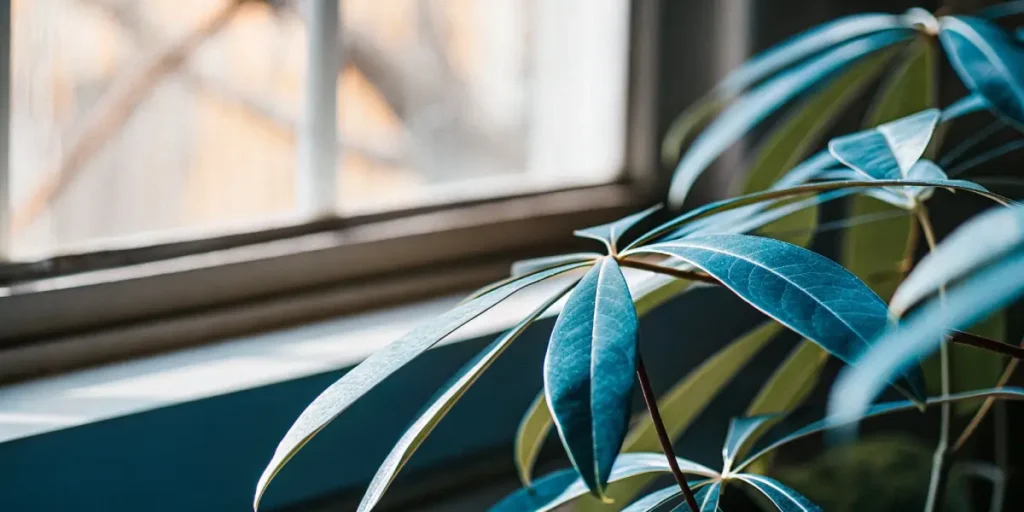
Gene Expression and Plant Growth
When photoreceptors send signals, they often affect the plant’s genes. This process is known as gene expression. Changes in gene expression can lead to visible growth changes, such as taller stems or more leaves.
For cannabis growers, knowing gene expression can help in selecting strains. For example, if you want fast growth, choose strains known for their vigorous vegetative growth. Adjusting light conditions can further enhance these traits.
Gene expression is a dynamic process that determines how plants respond to their environment. By influencing gene activity, growers can modulate plant growth and development, tailoring characteristics like height, yield, and flowering time to specific needs.
Advancements in biotechnology are providing new tools for manipulating gene expression, offering exciting possibilities for breeding and cultivation. As our knowing of how plants sense light deepens, these innovations promise to revolutionize agricultural practices, enhancing both efficiency and sustainability.
Practical Tips for Growers
Knowing how plants sense light can give you an edge in cannabis cultivation. Here are some practical tips to make the most of this knowledge:
- Use blue light during the vegetative stage to promote leaf growth.
- Switch to red light for flowering to encourage bud formation.
- Experiment with far-red light to adjust the plant’s internal clock.
By experimenting with different light settings, you can discover which conditions work best for your chosen strains. Keep an eye on how your plants respond and make adjustments as needed.
Whether you’re growing Blue Dream or Girl Scout Cookies, paying attention to how your plants sense light can lead to healthier plants and bigger yields. Always be willing to tweak your setup for optimal results.
Additionally, consider the role of phototropins in plant light sensing when arranging your grow lights. Ensuring even light distribution can prevent uneven growth and optimize overall plant health. Regularly rotating plants can also help maintain balanced exposure.
Finally, don’t overlook the importance of light intensity and duration. Tailoring these factors to the specific requirements of your plants can significantly impact growth rates and yield quality. Stay observant and be open to adjusting your approach as needed.
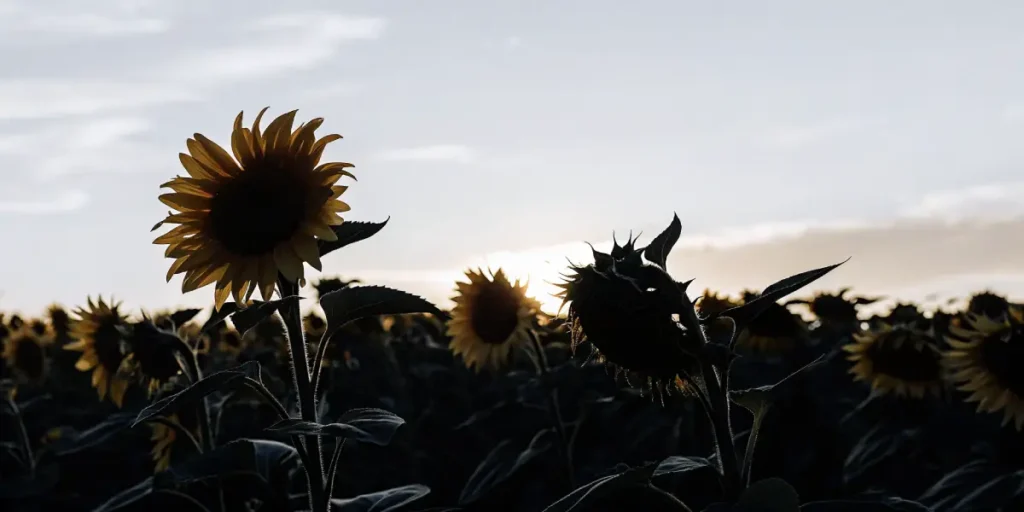
FAQs
What are phototropins and their role in plant light sensing?
Phototropins are a type of photoreceptor sensitive to blue light. They play a crucial role in how plants sense light, specifically in directing growth towards light sources. This process, known as phototropism, ensures that plants maximize their exposure to sunlight, which is essential for photosynthesis.
In practical terms, you might notice your cannabis plants bending towards the light in your grow room. This is phototropins at work, adjusting the plant’s position to capture more light. Knowing this can help you position your lights effectively, ensuring even growth across your plants.
The function of phototropins in plant light sensing extends beyond mere growth direction. These receptors also impact stomatal opening, influencing water use efficiency and gas exchange. By comprehending these functions, growers can optimize environmental conditions to promote plant health and productivity.
Moreover, phototropins interact with other photoreceptors to fine-tune plant responses under varying light conditions. This interplay ensures that plants adapt optimally to their environment, balancing growth with energy efficiency.
How does light wavelength affect plant growth?
Different light wavelengths have various effects on plant growth. Blue light is generally associated with vegetative growth, promoting strong leaves and stems. It’s why many growers use blue lights during the early stages of growth.
Red light, however, is more beneficial during the flowering stage. It encourages the development of flowers and fruits. By understanding these effects, you can tailor your lighting setup to suit different growth stages, optimizing plant health and yield.
Exploring how plants respond to different light wavelengths can also be a creative process. By adjusting light spectra, growers can experiment with enhancing certain plant traits, such as color intensity and aroma, to develop unique and marketable products.
Furthermore, the strategic use of light wavelengths can mitigate stress responses, improving plant resilience against environmental fluctuations. This capability is particularly advantageous for growers aiming to maintain consistency in quality and yield.
Can manipulating light improve cannabis yields?
Yes, adjusting light conditions can significantly impact cannabis yields. By using the right light spectrum at the right time, you can enhance growth and bud production. For example, using red light during flowering can lead to larger, more potent buds.
Experimenting with light cycles and intensity can also help. Some growers use techniques like light deprivation to mimic natural conditions, inducing flowering at specific times to maximize harvests. The key is to observe how your plants respond and adjust accordingly.
Implementing advanced lighting technologies, such as LED systems with customizable spectra, allows for precise control over plant growth. This adaptability can lead to substantial improvements in both yield quantity and quality, offering a competitive edge in the market.
Besides to yield enhancement, controlled light manipulation can reduce energy consumption, making cultivation practices more sustainable. This approach not only benefits growers economically but also contributes to environmentally responsible agriculture.
What are the best light conditions for growing cannabis indoors?
Ideal light conditions vary depending on the growth stage. During the vegetative stage, blue light is your best bet, promoting leafy growth and strong stems. As your plants transition to flowering, switch to red light to encourage bud development.
Keep in mind the intensity and duration of light exposure too. Most cannabis plants thrive under 18 hours of light during the vegetative stage and 12 hours during flowering. Adjusting these conditions can help you fine-tune your grow room for optimal results.
Incorporating far-red light during the end of the day can simulate natural sunset conditions, signaling plants to prepare for nighttime processes. This technique can enhance flowering initiation and synchronize plant development.
Balancing light exposure with other environmental factors, such as temperature and humidity, is crucial. Creating a harmonious growing environment ensures that plants can fully exploit available resources, leading to robust and healthy growth.
How do molecular mechanisms of light perception influence plant behavior?
Molecular mechanisms of light perception involve photoreceptors triggering changes in gene expression. These changes alter plant behavior, affecting growth patterns, flowering, and even stress responses.
By understanding these mechanisms, growers can influence plant behavior through light manipulation. Whether it’s speeding up growth or enhancing bud quality, knowing how plants sense light at the molecular level provides valuable insights for successful cultivation.
The intricate molecular mechanisms of light perception highlight the adaptability of plants in various environments. This adaptability is a testament to the evolutionary success of plants in colonizing diverse habitats, ranging from shaded understories to sun-drenched fields.
Advances in molecular biology continue to uncover the sophisticated systems plants use to interpret light signals. This knowledge drives innovations in agriculture, enabling the development of crops that can better withstand changing climatic conditions and meet the demands of a growing population.




